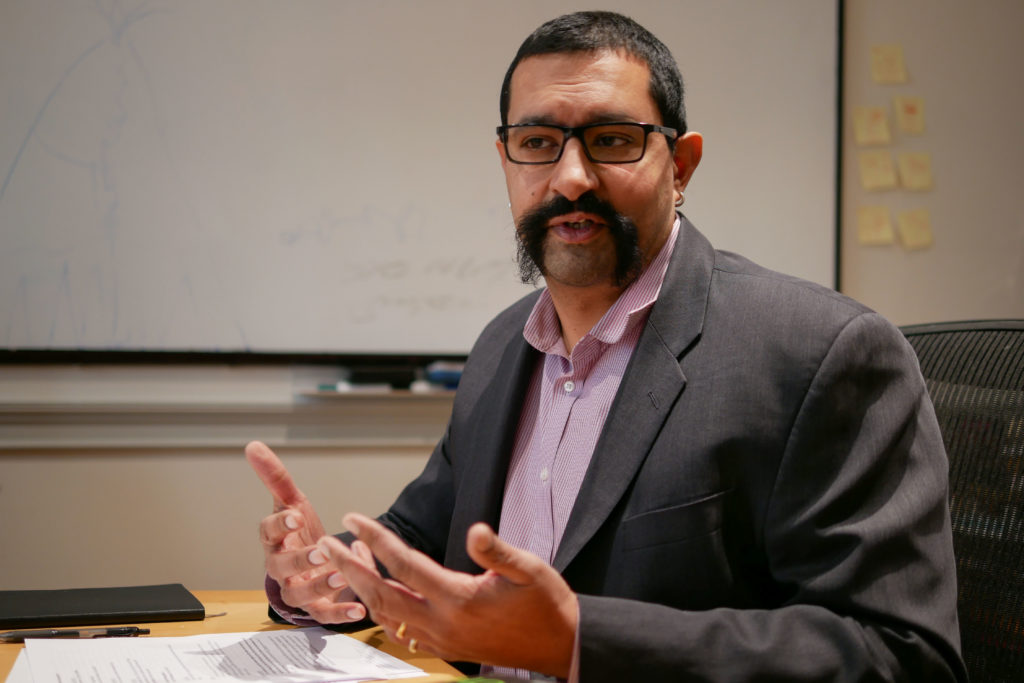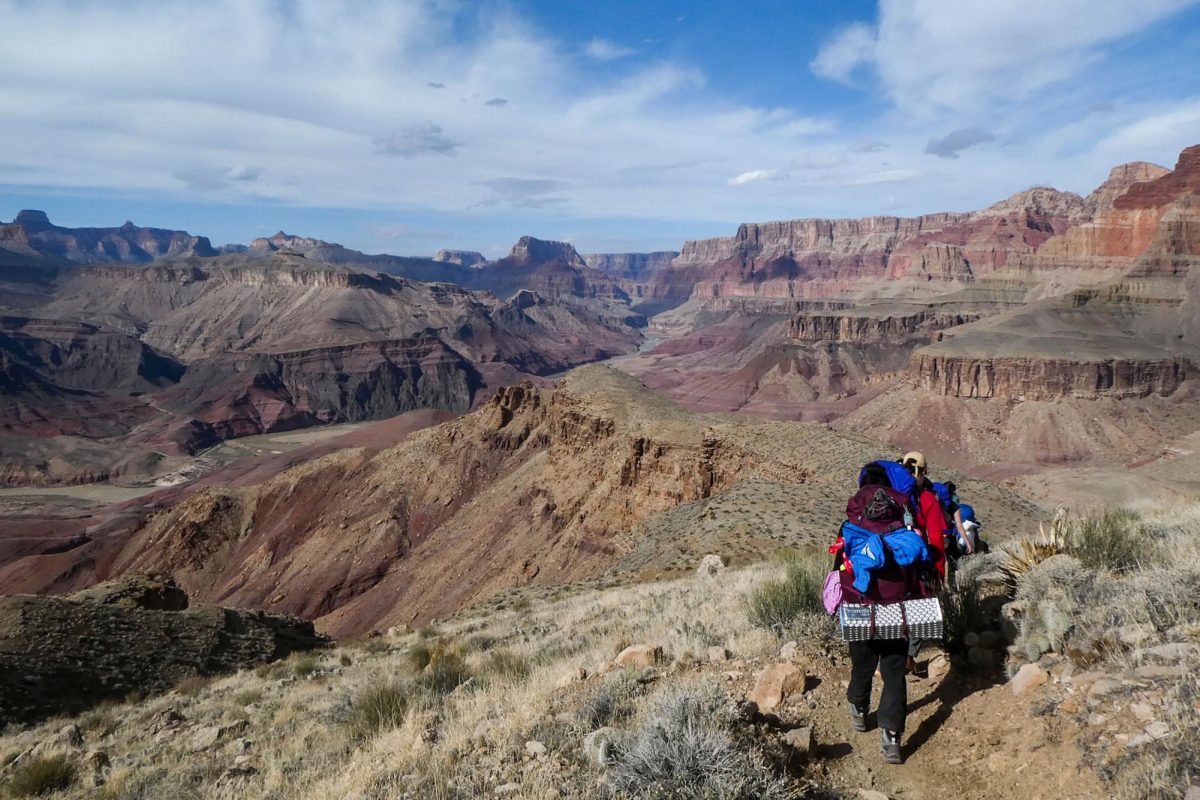When Sanjit Sethi stepped in as the inaugural director of the Corcoran School of the Arts and Design in 2015, he faced a newly acquired school struggling to find its place at GW.
Over the past three years, with limited funds and resources from GW, Corcoran has experienced disruptive construction to its flagship building, faculty contract issues and declining enrollment. But now Sethi said he’s focusing on outlining a strategic plan, collaborating with the D.C. community and hiring more faculty – plans he said will push the school in the right direction.
“Part of the agenda I have is to make sure that our students, faculty and staff feel like we are one integrated community despite the fact that we’re spread out over a series of buildings with some very distinctly unique pedagogies,” he said.
Determining a plan
Sethi said the school will start a strategic planning process that includes outlining a series of goals for the school next semester, which will mainly focus on building up Corcoran’s community.
“We are going to be embarking in the spring on a strategic planning process, again kind of with that same idea, seeing how do we see kind of what binds us together as a broader community, how are we able to do things that are greater than the sum of its parts,” he said.
He said the strategic planning process for next semester will involve fostering engagement with both within Corcoran and outside the school. He said that fostering more interdisciplinary critiques – where faculty give feedback on student work from other areas of the school – could help create a strong community.
Sethi said the school is looking to hire four new faculty next fall who specialize in music, graphic design, printmaking and photojournalism – areas the school hopes to build up.
“We’re looking for faculty members to see how they can be excellent in their field where they’re supposed to have their major area of pedagogical practice, but also how they can be connectors to students that are working and doing remarkable work outside of those disciplinary areas,” he said.
He added that the school is currently analyzing a recent proposal for Corcoran to launch a fundraising campaign. The report, obtained by The Hatchet last week, was released in February by the consulting firm Development Resources, Inc., which determined that Corcoran was not ready to launch a fundraising initiative based on its current resources and donor base.
Sethi said officials are discussing what factors would help raise money, like building a closer relationship with the school’s alumni, which could be included in the strategic planning process. He said the exhibition of political cartoonist Rob Rogers’ work over the past four months has given the school a “greater degree of positive visibility,” which he said could be a stepping stone toward a fundraising campaign.
“A capital campaign isn’t simply like turning on or off a light switch, right, since I think it requires a degree of preparing yourself to feel like that you’re able to go ahead and take on such an ambitious thing,” Sethi said.
Engaging the community
Sethi said one of the biggest tasks on the school’s agenda this year is fostering relationships between faculty and students and community organizations in D.C.
“One of my broader agenda items is to make sure that the Corcoran as an institution is as permeable as possible,” he said.
Sethi said the school is piloting a program titled Corcoran Connect, which he said will include a series of four to six classes beginning in the fall semester where students will work with organizations in D.C. to focus on community engagement and project-based learning.
“We need to make sure there’s a problem set students can really dig their teeth into and they can really kind of go through a process of experimentation,” he said. “At the same time, the balance for that is to make sure that we’re not also fetishizing communities.”
Sethi said the school is also working to strengthen connections with other schools, including the School of Media and Public Affairs. He said Corcoran’s photojournalism major shares “natural affinities” with SMPA’s offerings, which he hopes can lead to more collaboration through co-sponsored events.
“I think GW has traditionally underinvested in design, and I think that the Corcoran has a role to play as it starts to increase issues around fundamentals of design thinking,” Sethi said.
Ari Golub, a sophomore majoring in photojournalism, said the dean has helped build up the community, but officials still have trouble engaging students in the school’s events. Only about three or four students attended the school’s most recent community lunch, he said.
“There hasn’t been a lot of progress with the open tables and with meetings and the lunches just because people don’t show up,” he said. “I just think that the students have to want to do it, and I think it’s going to take some time, like five to 10 years time, to make the Corcoran what it was.”
Nicole Degliomini, a senior majoring in interior architecture, said the Corcoran has improved over the past few months after construction on the Flagg Building ended, but she hopes that the school will make more student lounges and facilities available.
“I think the Corcoran just needs to keep talking to the students, especially the students in the school and just hear out our needs and about how it’s just, we are here for such long hours, it just needs to go through the right channels and get done because it’s only going to improve student quality of life here,” she said.
Matthew Wilson, an associate professor of theater, said Sethi’s emphasis on forming interdisciplinary connections is taking the school in the right direction. He said he has attended several of the school’s community lunches and said the events are a “good way” of forming connections.
“The really exciting opportunity here with the school is the way that the arts in an interdisciplinary way are coming under the same umbrella,” he said.
Lauren Peller and Sarah Roach contributed reporting.





